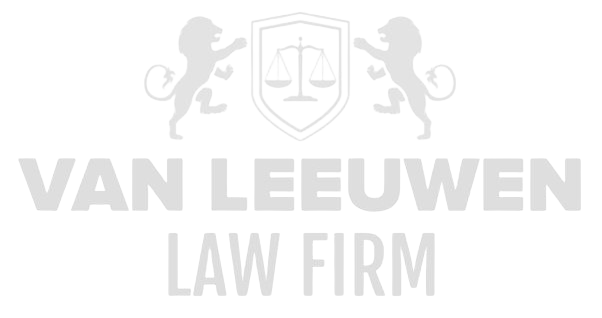The global supply chain is increasingly confronted with a complex interplay of financial, legal, and strategic vulnerabilities that arise directly from extreme weather conditions and the resulting volatility in commodity markets. This dynamic creates an environment in which traditional risk-management mechanisms are no longer sufficient, and in which enterprises face a multitude of compliance obligations, regulatory scrutiny, and potential disputes. Structural disruptions to production and logistics infrastructure caused by climate-related incidents lead not only to significant cost increases, but also to unprecedented challenges relating to market integrity, financial transparency, and accountability. In such a landscape, executives are expected to demonstrate a level of sophistication deeply rooted in both legal and economic reasoning, enabling them to safeguard stakeholder interests and ensure continuity of operations.
At the same time, a fragile ecosystem is emerging in which markets, influenced by scarcity-driven pressures, can become artificially unbalanced, thereby heightening the risk of price manipulation, improper preferential treatment, inadequate risk management, and cross-border compliance breaches. Governance pressure increases as regulators place greater emphasis on preventing market distortion, ensuring transparency in price formation, and enforcing robust compliance frameworks. Enterprises are thus compelled to adopt a risk approach that extends beyond conventional financial mitigation and encompasses the full spectrum of legal, reputational, and sanctions-related exposures. In this context, the extent to which organisations anticipate and respond to these interconnected risks becomes a defining factor for their strategic resilience and lawful operability.
Fraud Risks Associated with Price Manipulation of Scarce Commodities in Vulnerable Markets
In markets where the availability of essential commodities declines due to disruptions caused by extreme weather conditions, an environment emerges in which price formation becomes susceptible to manipulation by parties holding a dominant position. Such manipulation may manifest in the artificial linking of contractual structures, strategic stockpiling, or the dissemination of misleading market information with the aim of influencing benchmark prices. These practices give rise to considerable legal implications, including potential violations of market-abuse regimes and civil liability towards trading partners that suffer losses due to unlawful pricing signals.
Furthermore, vulnerable markets often foster conditions in which transactions may proceed without adequate internal quality control, significantly increasing the likelihood of internal or external fraudulent conduct. When traders are under pressure to secure supply continuity, a business environment can arise in which deviations from ethical standards become more readily rationalised by operational urgency. This context may encourage collusion with intermediaries or competitors seeking strategic price advantages at the expense of market transparency and lawful competition.
These dynamics also entail material risks for the integrity of financial reporting, as manipulated commodity prices can directly affect valuation models, hedge effectiveness, and revenue recognition. Incorrect or misleading valuations may lead to material misstatements, prompting regulators to take far-reaching action, including enforcement proceedings, fines, and requirements to overhaul internal control systems. The reputational harm resulting from exposure to fraudulent market practices may have long-lasting adverse effects, both strategically and financially.
Corruption Risks in Scarcity Allocation or Preferential Treatment by Public Authorities
Extreme scarcity of commodities increases reliance on permits, export allocations, and logistical exemptions that often fall under the direct control of public authorities. In scenarios where bureaucratic processes are under strain, situations may arise in which improper influence or corrupt practices are used to obtain priority access to scarce resources. Such actions entail significant risks under anti-corruption legislation, including both domestic frameworks and extraterritorial regimes such as the FCPA and UK Bribery Act, which impose stringent bases for liability.
Crisis situations frequently generate asymmetries of information and power, enabling decision-makers within public agencies to exercise inappropriate discretion when granting approvals, inspection waivers, or other authorisations. This may lead to circumstances in which enterprises encounter unusual requests, informal payment structures, or implicit expectations of reciprocity. An inadequate response to such signals may result in legal, operational, and reputational consequences that extend beyond the immediate transaction and may impact the entire supply chain.
Corruption risks in scarcity-driven markets are not solely external in nature; employees responsible for interactions with regulatory authorities may experience heightened pressure, increasing the likelihood of internal breaches. Insufficient oversight mechanisms, inadequate training, or the absence of secure reporting channels may allow risky behaviour to go undetected until it escalates into serious compliance incidents. The consequences extend beyond legal sanctions to include structural constraints on future cooperation with public authorities, potentially hindering major strategic initiatives.
Allegations of Financial Mismanagement in the Context of Inadequate Hedging Policies
Volatility in commodity prices driven by extreme weather events places substantial pressure on treasury and risk-management functions responsible for designing robust hedging strategies. When such strategies fail to align with the nature, duration, or intensity of the risks to which the enterprise is exposed, allegations of financial mismanagement may arise from investors, regulators, or contractual counterparties. Insufficient hedging of price fluctuations may result in significant losses, undermining the organisation’s financial position and damaging the credibility of its leadership.
In addition to the risk of under-hedging, exposure may arise from over-hedging or from the use of instruments that do not comply with accounting and reporting standards. Where the complexity of derivative portfolios results in inadequate explanation of risks, regulators may initiate extensive supervisory investigations and impose requirements to restructure risk-management processes. In an environment where volatility is structural rather than episodic, failures in hedging policies can rapidly be framed as governance issues that call into question the effectiveness of the broader risk framework.
Moreover, inadequate hedging strategies may produce contract prices that diverge from market-consistent levels that would have been achieved under sound risk-management practices. Counterparties may argue that they have been subjected to unreasonable or unforeseeable pricing pressures, potentially giving rise to disputes, claims, or attempts to renegotiate contractual terms. Such exposure carries substantial legal risk, as demonstrable negligence in risk management may be deemed a breach of contractual or fiduciary obligations.
Money-Laundering Risks in the Trade of Commodities Originating from High-Risk Regions
Increased reliance on commodities sourced from regions affected by political instability, conflict, or weakening state institutions creates an environment in which exposure to money-laundering schemes becomes significantly more likely. Trade transactions in such areas frequently lack transparency regarding ownership structures, origin of goods, and the integrity of intermediaries. Insufficient due diligence may result in enterprises inadvertently facilitating transactions linked to organised crime, corruption networks, or the financing of illicit activities.
Market pressures arising from scarcity may encourage accelerated procurement decisions that bypass full integrity screening. Such truncated processes heighten the risk of engaging with entities that rely on complex payment structures, offshore vehicles, or fictitious trade flows to legitimise illicit proceeds. The legal implications of such lapses are substantial and may include civil penalties, criminal investigations, and exclusion from participation in regulated markets.
Money-laundering risks also extend beyond direct transactions, manifesting within the broader supply chain. Logistics providers, freight forwarders, agents, and joint-venture partners may be utilised—sometimes without obvious indicators—as conduits for illicit financial flows. Enterprises that fail to maintain sufficient oversight over supply-chain integrity may ultimately be held liable for facilitating activities that contravene anti-money-laundering regimes, with the additional consequence of eroding confidence among investors and financial institutions.
Sanctions Risks in Transactions with Sanctioned Suppliers
Geopolitical shifts associated with disruptions in commodity markets heighten the likelihood that enterprises will engage with suppliers, intermediaries, or logistics partners subject to international sanctions regimes. The complexity of these regimes—which vary by jurisdiction and are frequently updated—necessitates meticulous review of every transaction. In an environment where urgency to secure scarce goods is high, operational imperatives may overshadow essential screening procedures.
Transactions involving sanctioned entities may result in severe fines, criminal liability, and civil claims for breach of contractual warranties or compliance obligations. Even indirect involvement—through subsidiaries, financial institutions, or traders connected to sanctioned entities—may suffice to trigger a sanctions violation. The reputational consequences of such incidents can be profound and may impair an enterprise’s position in international markets over the long term.
The continuous expansion and tightening of sanctions regimes also impose increasing demands on compliance functions responsible for monitoring complex ownership structures, beneficial-ownership arrangements, and transaction flows. Where such controls are inadequate or red flags are not escalated in a timely manner, enterprises may be exposed to risks that extend far beyond the immediate commercial relationship. The resulting consequences may include not only financial penalties, but also loss of access to capital markets and obstacles in forming strategic partnerships.
Reputational Erosion Resulting from Passing On Cost Increases Without Transparency
The structural price shocks arising from increasingly extreme weather conditions compel enterprises to pass cost increases on to customers, often in markets already strained by volatility and limited raw-material availability. When such price adjustments are implemented without sufficient explanation, proportionality, or clarity regarding the underlying pricing components, a significant reputational risk can emerge. Stakeholders—including customers, regulators, and civil-society organisations—may perceive these increases as opportunistic or disproportionate, thereby undermining the organisation’s credibility and creating an impression of inadequate accountability. In market environments characterised by heightened sensitivity, a lack of transparency may be interpreted as an indication of inefficiencies, hidden profit margins, or deficient risk management.
An additional dimension arises from the growing scrutiny of public opinion toward companies that pass cost increases directly to customers while failing to take internal measures to strengthen operational resilience or mitigate risks. The perception that price adjustments are used primarily to compensate for internal shortcomings, rather than as a necessary response to genuine market developments, may trigger reputational erosion manifesting in customer attrition, constraints on strategic partnerships, and declining investor confidence. A lack of consistent and clear communication amplifies this effect, reinforcing the impression that the enterprise either lacks adequate control over its risks or deliberately obscures them.
Furthermore, there is a risk that market participants or advocacy groups may publicly challenge the reliability and integrity of the pricing mechanisms applied, particularly when transparency is deficient. In an era in which corporate-governance standards demand a high degree of openness, failure to provide adequate disclosure may be interpreted as an implicit acknowledgment of insufficient oversight, internal fragmentation, or potential mismanagement. The resulting reputational damage extends beyond the commercial sphere: it affects the enterprise’s ability to attract talent, maintain licences, secure access to financing, and credibly substantiate its sustainability claims.
Contractual Claims Arising from Mismanagement of Supply-Pricing Strategies
The sharp and often abrupt price fluctuations in commodity markets expose enterprises to substantial risks when supply-pricing strategies fail to anticipate market disruptions caused by increasingly extreme weather conditions. Contractual counterparties may argue that the pricing mechanisms, indexations, or escalation clauses applied are inadequately designed, insufficiently adjusted to changing conditions, or inconsistently implemented. This may result in claims for breach of contract, violation of contractual duties of care, or mismanagement of strategic procurement processes. In legally complex contract structures—particularly long-term supply agreements—such inconsistencies may be regarded as fundamental shortcomings with far-reaching financial implications.
Beyond substantive weaknesses in pricing strategy, contractual disputes may arise from inadequate documentation, lack of transparency in decision-making, or insufficient evidence supporting the proportionality of price adjustments. Where enterprises are unable to demonstrate that pricing decisions were based on objective, verifiable data or market indicators, there is a risk that a court or arbitral tribunal will conclude that the enterprise acted negligently. This risk is particularly pronounced in sectors where supply chains involve long lead times and price risks must be anticipated ex ante. The absence of such foresight may be interpreted as indicative of insufficient strategic management.
Moreover, mismanagement of supply-pricing strategies may generate secondary legal consequences, including termination of commercial relationships, claims for damages resulting from production disruptions, or contractual penalties triggered by non-compliance with delivery or pricing obligations. The impact extends into the governance sphere, as internal oversight bodies may determine that decision-making processes lacked adequate rigour or that risk indicators were not identified or escalated in a timely manner. The resulting legal and commercial damage can have long-term repercussions on value creation, market positioning, and the enterprise’s strategic flexibility.
Governance Pressure Regarding Robust Financial Buffers and Crisis Mechanisms
The rise in extreme weather events and the resulting volatility in commodity markets heighten expectations that enterprises maintain robust financial buffers and crisis mechanisms capable of withstanding sudden disruptions. When such structures prove inadequate, a governance risk emerges whereby regulators, shareholders, and internal audit bodies raise critical questions about the sustainability and effectiveness of financial strategy. The absence of adequate liquidity reserves, stress-test scenarios, or contingency-financing plans may be viewed as insufficient preparation for foreseeable risks, thereby eroding confidence in the board’s stewardship.
Stakeholders increasingly emphasise an integrated risk approach in which financial, operational, and legal mechanisms are coherently managed. Governance pressure arises when decision-making processes lack such integration, resulting in fragmented monitoring or inadequate prioritisation of risks. In such circumstances, enterprises may be accused of failing to discharge their prudential responsibility to take timely measures to enhance resilience, notwithstanding clear indications of market disruption.
A further governance challenge emerges when internal escalation procedures or crisis-response systems do not operate as intended—for example, due to deficient communication, slow decision-making, or inadequate coordination between executive leadership, risk-management functions, and operational teams. This not only creates material risks for the enterprise but may also lead to regulatory intervention, heightened reporting obligations, or the appointment of external monitors. A governance failure of this nature can have lasting effects on the organisation’s reputation and erode the confidence of institutional investors.
Regulatory Investigations into Market Disruption or Price Formation
Persistent volatility in commodity markets increases the likelihood that regulators will initiate extensive investigations into price-formation mechanisms, market behaviour, and transaction flows, particularly when signs of market disruption or disproportionate price movements appear. In such circumstances, enterprises may face demanding data-analysis requirements, documentation requests, and explanatory obligations that place significant strain on operational capacity. Inconsistencies in internal decision-making or inadequate record-keeping of pricing rationales may trigger further enforcement actions, including fines or directives requiring the restructuring of internal controls.
Periods of scarcity and heightened public sensitivity also foster suspicion that market actors may be exploiting their position or failing to operate transparently. Regulators may use such circumstances to conduct broader systemic reviews examining the effectiveness of internal governance, risk-management, and compliance processes. These investigations assess whether enterprises responded appropriately to market-disruptive conditions and whether their commercial strategies supported—or undermined—fair market functioning.
Additionally, regulatory investigations may give rise to secondary legal consequences, as findings may be shared with other authorities, including competition regulators or international sanctions bodies. Where evidence is found of inadequate disclosure, violations of market rules, or breaches of compliance obligations, enterprises may face parallel investigations or civil claims from affected parties. The reputational consequences of such scrutiny are often substantial, as public perception is strongly shaped by the indication that regulators deemed it necessary to intervene at a deep level.
Litigation Exposure Resulting from Inadequate Disclosure of Price Risks
The unpredictability of commodity prices driven by extreme weather conditions raises stakeholder expectations regarding transparency around price risks. When enterprises fail to provide timely, complete, and accurate information concerning potential volatility, exposures, and mitigation measures, they may face significant litigation exposure. Stakeholders may allege that they were misled or that material risks were insufficiently communicated, giving rise to claims for misrepresentation, breach of disclosure obligations, or misleading financial reporting.
Inadequate disclosure is frequently linked to assertions that the board failed to exercise due care in assessing and communicating price risks, particularly when internal analyses had already identified substantial exposures. In such cases, accusations may arise that information was intentionally or negligently withheld, thereby distorting investment decisions or artificially supporting market valuations. Such claims may lead to lengthy and costly proceedings, potentially resulting in financial compensation orders as well as mandated structural enhancements to governance and risk-management frameworks.
Litigation exposure may also extend into the contractual sphere, particularly where price fluctuations have triggered disputes over the interpretation of contractual obligations or expectations regarding risk allocation. Insufficient disclosure of market developments may be invoked by contractual counterparties as evidence that they were unable to make informed decisions or implement appropriate countermeasures. The legal implications extend beyond financial repercussions, as such disputes may disrupt commercial continuity, weaken strategic relationships, and undermine the enterprise’s standing in the market.









